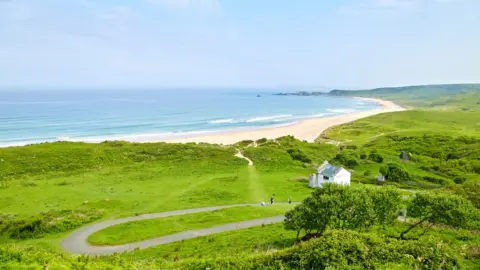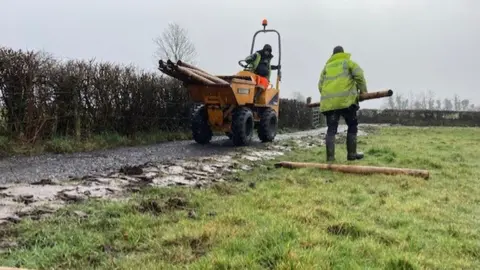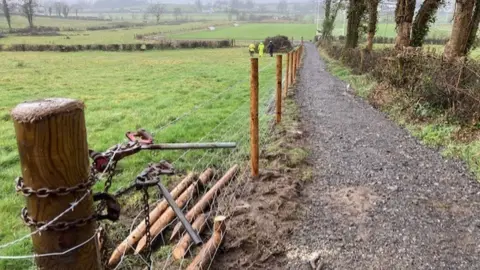Rights of way: Laws on countryside public access under review
 BBC
BBCThe laws on public access to the countryside are being reviewed to see whether changes should be considered.
It is being done by the Department of Agriculture and Environment with 60 organisations asked for input.
The department insists national parks for Northern Ireland and so-called right to roam legislation are not on the agenda.
It said the action is being taken as part of an attempt to achieve a balance between different interested groups.
It said it is about "enabling public access to our natural environment while protecting that environment and ensuring landowner rights".
Covid has seen large numbers of people heading to the countryside.
Restricted access
Unlike other parts of the UK, access in Northern Ireland is much more restricted.
And that has meant that places which are accessible have sometimes been very crowded during the lockdown.
In areas like the Mourne Mountains, some routes to the summits cross private land where access is tolerated by landowners.
Northern Ireland has a tiny number of public rights of way compared to Britain, and largely depends on public landowners like the Forestry Service, NI Water and government-run nature reserves to facilitate walking.
 Getty Images
Getty ImagesBy contrast, people in Scotland have a right of responsible access to most undeveloped and uncultivated land. In England and Wales they can freely walk large areas of mountain, moor, heath and down designated as access land.
Graham Seymour, of the National Outdoor Recreation Forum, an umbrella body of outdoor organisations, said the differences are the legacy of work done in post-war Britain to identify and assert public rights of way in the countryside before there was agricultural expansion.
He said the other big factor is the pattern of landowning in Northern Ireland, with a large number of small farms, which complicates access arrangements.

"I think the department is being very sensible here, I think what they're trying to do is to find a way forward in which there's going to be a good consensus with landowners," he said.
"I think what they're trying to say is look, realistically, the best chance for us to develop a really good network of paths is through agreement, rather than trying to force through legislation, which is going to be deeply unpopular with many of the farming community."
Opening up access
One approach that is increasingly being tried here is that of permissive paths.
That is where landowners agree access with councils, which organise construction and take on maintenance and public liability.
One such path is currently being built at Arney in County Fermanagh. The 2km route required the agreement of nine different landowners.
It connects the local school, community hall and GAA ground with a 16th century battlefield - site of the so-called Battle of the Ford of the Biscuits in 1594.

Community worker Barney Devine says it will encourage people dropping children to school, or picking them up from training, to take a walk and reconnect with their heritage and history.
Landowners were more than happy to get involved, he says.
"The path has been developed with them. The route has been agreed with them and everybody has bought into the idea of coming together to do this path."
